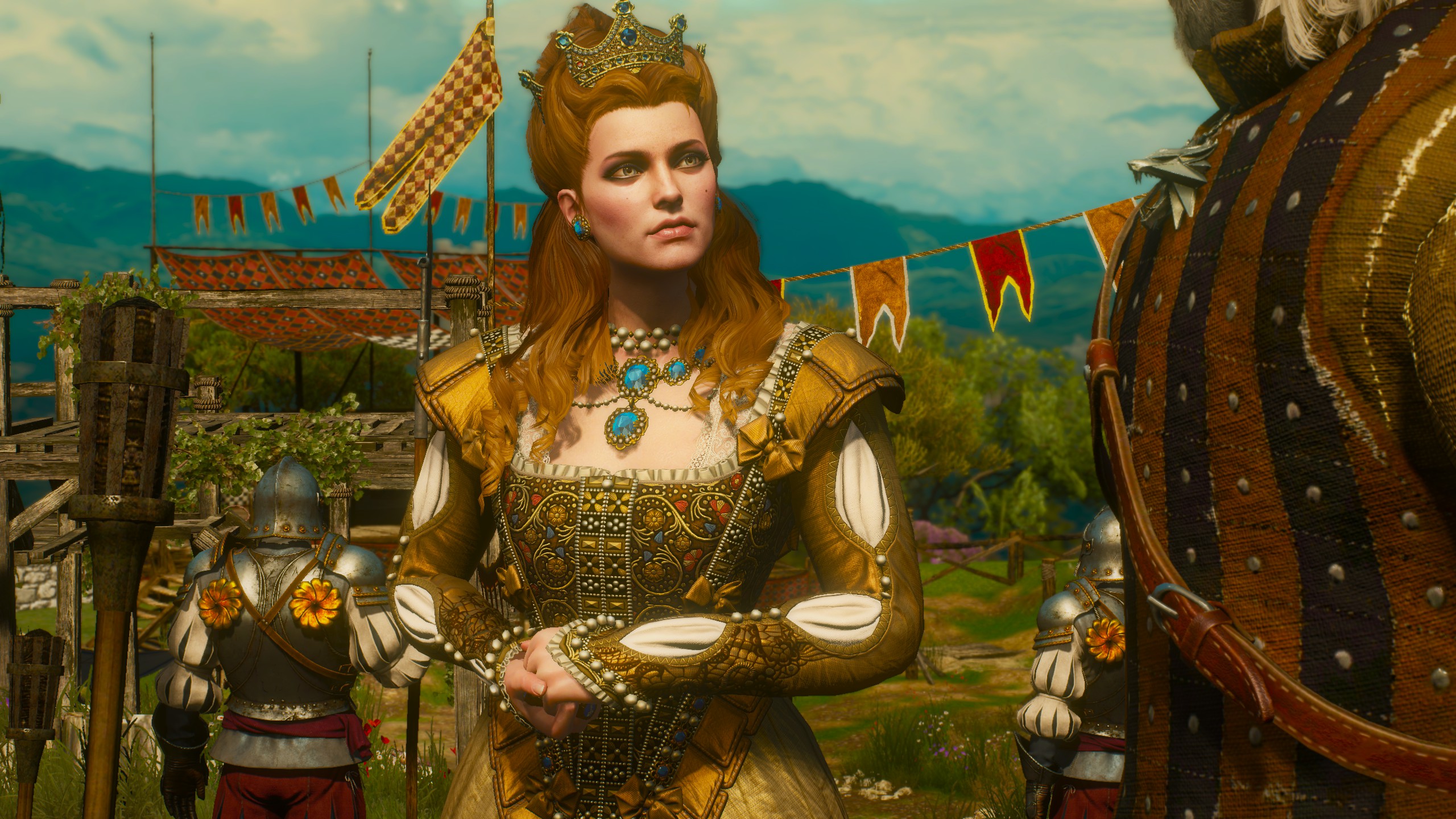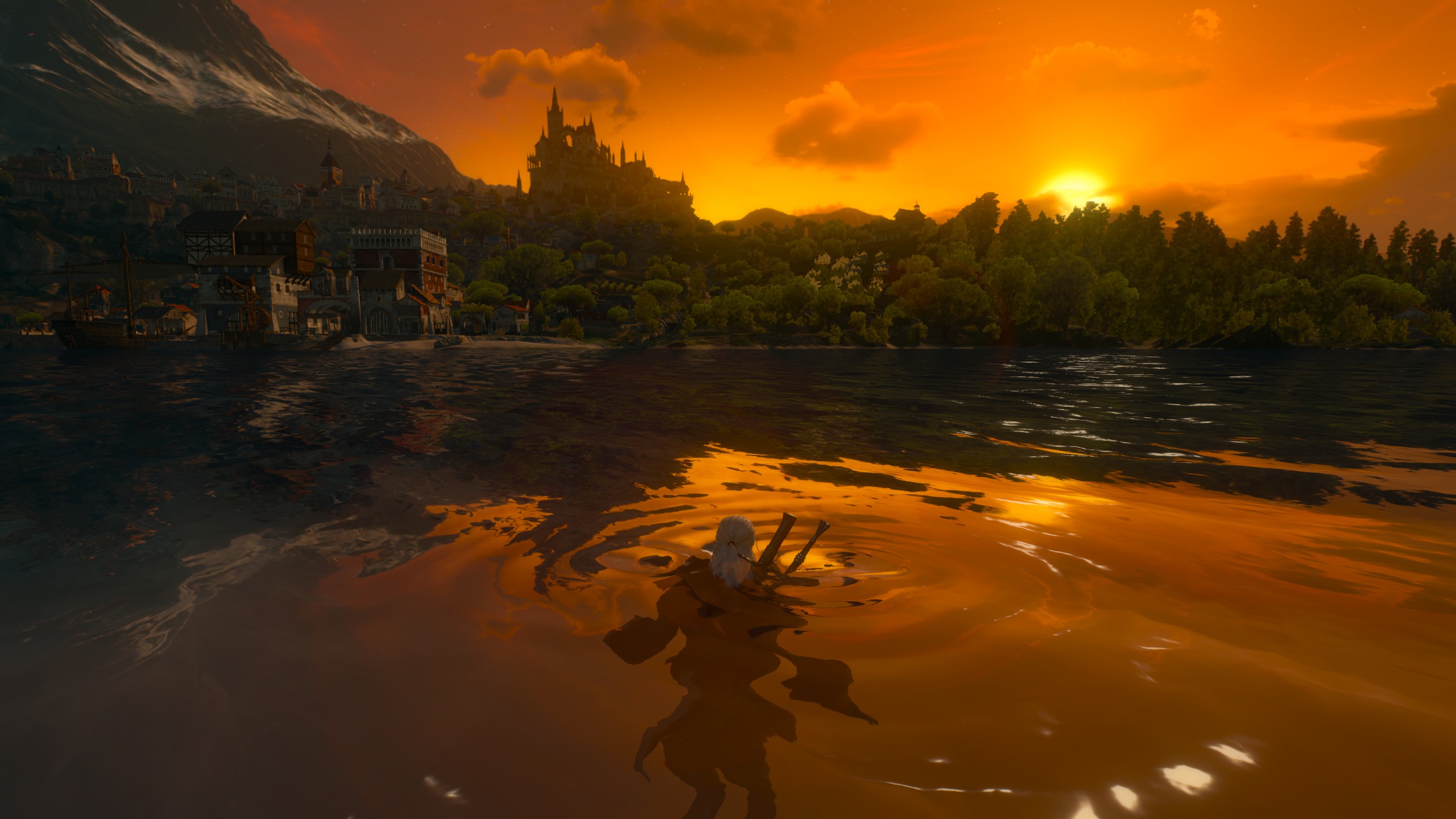Totally Bewitching.
When The Witcher 3: The Wild Hunt launched, it did so amidst a controversy about downscaled graphics, bugs, gameplay, and optimization issues for which GameRevolution's reviewer, Jonathan Leack, gave it a somewhat lackluster rating. In the following months the developer CD Projekt RED worked to address all of these issues with a series of free patches, sometimes making massive changes to game UI, graphics processing, and gameplay.
Jonathan wrote about the improved technical execution in a recent feature, having returned to the series with the release of its new expansion. On gameplay and story, the expansion The Witcher 3: Blood and Wine, is The Witcher at its very best; a great standalone story built on strong character relationships and expansive, accessible lore that is as much about Witcher Geralt's struggles with humanity as it is about fighting monsters.
In the expansion's new environment, the tiny vassal-state of Nilfgaard, Geralt is summoned by Anna Henrietta, The Duchess of Toussaint to kill "The Beast," a monster that has been murdering prominent nobles. The victims are staged to show how they betrayed their knightly virtues; suggesting that there's more than just savagery involved. Geralt must ferret out the why of the crimes in order to stop more of them, along with the help of an old friend, the bookish vampire Emiel Regis Rohellec Terzieff-Godefroy.
Geralt and Regis are familiar with Toussaint and Anna Henrietta—in The Witcher novels, Geralt's party is waylaid there in his original quest to rescue Ciri by an enchantress working for the The Lodge, a powerful cabal of sorceresses. Much of the main plot centers around conflicts between powerful people (and monsters) where Geralt is an unwilling chess piece used to further the narrative game between them. In one of the best scenes in the game, Geralt sits down at a dinner party where both The Duchess and the monster he's supposed to destroy are present, and the dialogue is handled with a subtle grace and tension that tells you everything you need to know, while most of the characters are blissfully unaware.
Like The Witcher 3's main story, Blood and Wine asks the player to make a series of important choices that will affect the world and lead to one of several endings, but they're much more obvious in the expansion than in the main game. There's no perfect win-state where everyone is happy; you must ultimately choose between two sympathetic monsters, one figurative and one literal. So much of the Blood and Wine's main story centers around the question of what a monster really is in Geralt's world, an important question for a man whose job is to kill them, but who tries to keep to his own moral code.
On the quest to do so, Blood and Wine plays with a number of fun anachronisms, taking contemporary ideas and putting them in a historical fantasy setting—a staple of the series. One of the most prominent is a series of encounters where Geralt and Regis can buy or shakedown information from a detective-novel-trope shoe-shine boy, playing to the series' investigative roots. Other examples are smaller but add to the atmosphere, like a man down at the docks drunkenly singing The Beatles "Norwegian Wood" and the fussy majordomo of Geralt's new estate's name referencing Faulty Towers (Barnabas–Basil Foulty).
For taking on Blood and Wine's contract, Geralt is gifted with a vineyard and permanent residence, which you can choose to upgrade from its dilapidated state at an expensive cost. This is a great incentive to take on more contracts in the area, along with additional upgrades to Geralt with new mutagens and special equipment upgrades.
But the main incentive to keep playing may be Toussaint's picturesque beauty. The Witcher 3 has never looked so lovely: Toussaint is a land of knights and courtly romance, with Disney-like castles, quaint wine-country vineyards, and lush forest, against a backdrop of sharp mountain peaks, giving the setting a fairytale quality where the grime and grit is beneath a glamorous surface. It's roamed by knights obsessed with collecting trophies and going on quests to earn the favor of ladies who may, or may not, want anything to do with them. Geralt is equal parts amused and annoyed by the pretense, which makes for some great comedy and action set-pieces.
Blood and Wine can be played as part of the main game, or as its own separate story from The Witcher 3's main menu (with Geralt automatically starting at level 35) and is mildly challenging on the default difficulty setting. Longtime fans of the series, who enjoy the challenge and alchemy preparation aspects, may want to play on the game's "Broken Bones" difficulty level or higher, since otherwise, it's a streamlined narrative experience that doesn't require any grinding to get through at that high level.
The main questline can be completed in about 10-15 hours with easily as much or more content to do in side-quests, contracts, and exploration of the new setting. This $20 expansion has enough excellent content that it rivals some full-priced triple-A titles; this is an excellent value that adds to the rich experience of The Witcher universe and is a fantastic send-off for the series. This is a real treasure and a tribute to all-things Witcher, perfectly captured in the final moment before the credits roll: a close-up of Geralt, who turns to look directly at the player through the screen with a subtle grin, as if giving thanks for the chance to tell one last Witcher story.
-
New expansive environment
-
Excellent story builds on lore
-
Great characters
-
Upgrades to equipment/mutagens
-
30+ hours of content
The Witcher 3: Blood and Wine On GTX 1080
-
The Witcher 3: Blood and Wine On GTX 1080 #1

-
The Witcher 3: Blood and Wine On GTX 1080 #2

-
The Witcher 3: Blood and Wine On GTX 1080 #3

-
The Witcher 3: Blood and Wine On GTX 1080 #4

-
The Witcher 3: Blood and Wine On GTX 1080 #5

-
The Witcher 3: Blood and Wine On GTX 1080 #6

-
The Witcher 3: Blood and Wine On GTX 1080 #7

-
The Witcher 3: Blood and Wine On GTX 1080 #8

-
The Witcher 3: Blood and Wine On GTX 1080 #9

-
The Witcher 3: Blood and Wine On GTX 1080 #10

The Witcher 3: Blood and Wine
-
The Witcher 3: Blood and Wine #1

-
The Witcher 3: Blood and Wine #2

-
The Witcher 3: Blood and Wine #3

-
The Witcher 3: Blood and Wine #4

-
The Witcher 3: Blood and Wine #5

-
The Witcher 3: Blood and Wine #6

-
The Witcher 3: Blood and Wine #7

-
The Witcher 3: Blood and Wine #8

-
The Witcher 3: Blood and Wine #9

-
The Witcher 3: Blood and Wine #10

-
The Witcher 3: Blood and Wine #11

-
The Witcher 3: Blood and Wine #12

-
The Witcher 3: Blood and Wine #13

-
The Witcher 3: Blood and Wine #14








